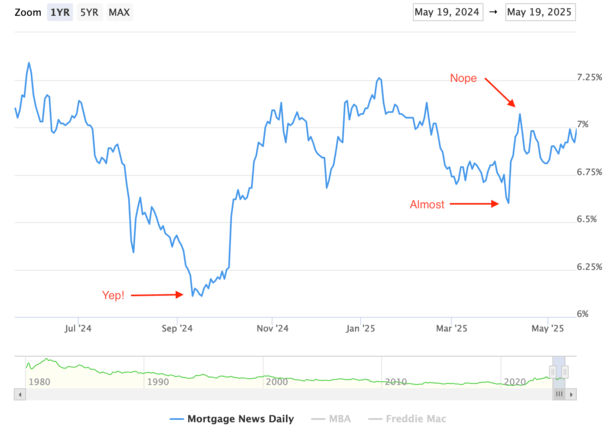HUD Secretary Turner: End to fair housing rule a state win
unitedbrokersinc_m7cmpd2025-05-21T17:22:25+00:00Department of Housing and Urban Development Secretary Scott Turner told a group of state regulators this week that his efforts to rip away federal bureaucratic red tape and shift more decision-making power to the local level will have benefits for them.Turner informed attendees at a summit hosted by the Conference of State Bank Supervisors that one of his first actions in doing so was terminating the Affirmatively Furthering Fair Housing rule.He called eliminating the AFFH, which Democrats oppose and housing groups have mixed views on, one of his "proudest moments so far," and said that it will return flexibility back to the states."The rule took zoning power away from the states and concentrated it in the hands of bureaucrats here in Washington D.C.," the head of HUD said. "It made local authorities go through a series of complex paperwork and steps to prove their housing policies were fair and that they were fighting alleged discrimination. It's almost like you had to make up discrimination." "The AFFH sounds like a good thing, but really this is the crown jewel of bad regulation," Turner added. The rule, which required recipients of HUD funds to take proactive steps to combat segregation, promote fair housing choices, eliminate disparities and foster inclusive communities, was implemented in 2015 under President Barack Obama. Since then, it has remained in limbo, alternating between being repealed and enforced. Turner's actions alone may not be enough to formally end the rule, according to legal experts.HUD's Secretary also echoed earlier remarks that the department is focused on increasing the housing supply across the United States, noting that about 7 million units are needed to meet current demand.One approach HUD is considering, Turner said, is opening up federally owned land for new construction. Turner said that through a partnership with the Department of the Interior, more than 500 million acres of federal land have been identified as underutilized and suitable for affordable housing development."The horizons in this country are endless," he said. "We have a lot of space that can be used for new homes, but more than a quarter of that is owned by the federal government. Did you know that building homes in those areas has proven to be difficult? We want to take down the barriers in order that we can utilize these lands to build affordable housing."HUD's Turner noted that the federal government will "not touch national parks or forests." "They will remain what they are beautiful for the people of America to enjoy. We're talking about land that can actually be utilized," he claimed.Turner also criticized previous heads of HUD and added that Trump's administration represents a "paradigm shift," in which "the federal government is no longer the solution to all of the problems in America.""Washington doesn't have all the answers. Washington doesn't have our solutions. The government doesn't. We are a great facilitator, if you will. But the solutions come from the private sector, from our nonprofits, from our faith-based institutions. We'll just need to partner and convene with them, but not the No. 1 solution."

